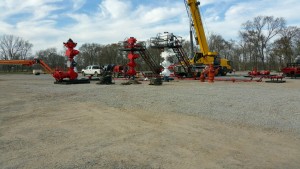
Top 3 Trends in Well Testing: Bigger Operations
Top Trends in Well Testing, Part 2: Bigger Operations
The size and scope of hydraulic fracturing operations continues to increase with technological advances in horizontal drilling and completions. Today, frac jobs call for more resources- water, sand, and horsepower- as energy producers operate multiple wells on a single pad. Larger operations require specialized equipment for handling flowback fluids, such as test separators.
Test Separators are able to efficiently separate oil, water, gas, and solids from flowback fluids. The oil and water are moved into isolated tanks, while the gas is flared off or ideally, redirected to a sales pipeline. Separators vary in size based on the unique requirements of the operation. Larger separators add efficiency and reduce completion costs. A larger separator can handle fluids from multiple wells at one time, a process called co-mingling. In addition, retention times are greater in a larger vessel, so more oil is recovered from the fluids and returned to the energy producer, rather than disposed of in an injection well.
These requirements have led to large and varied equipment demand. Select Energy Services, for example, owns and operates 125 full sets of equipment across the U.S. shale plays. This includes two inch to four inch 1502 iron, 15,000-psi frac stands, 15,000- psi plug valve manifolds, 15,000-psi hydraulic choke manifolds, 15,000-psi plug catchers, 1,440-15,000-psi sand separators, flare stacks, combustors and multi-phase test separators with working pressure ratings ranging from 200 to 3,000-psi.
Next up: we’ll discuss how regulations drive innovation in the well testing and flowback business unit.
To learn more about well testing & flowback at Select Energy Services, download our one-pager or click here to contact an experienced member of our team.
